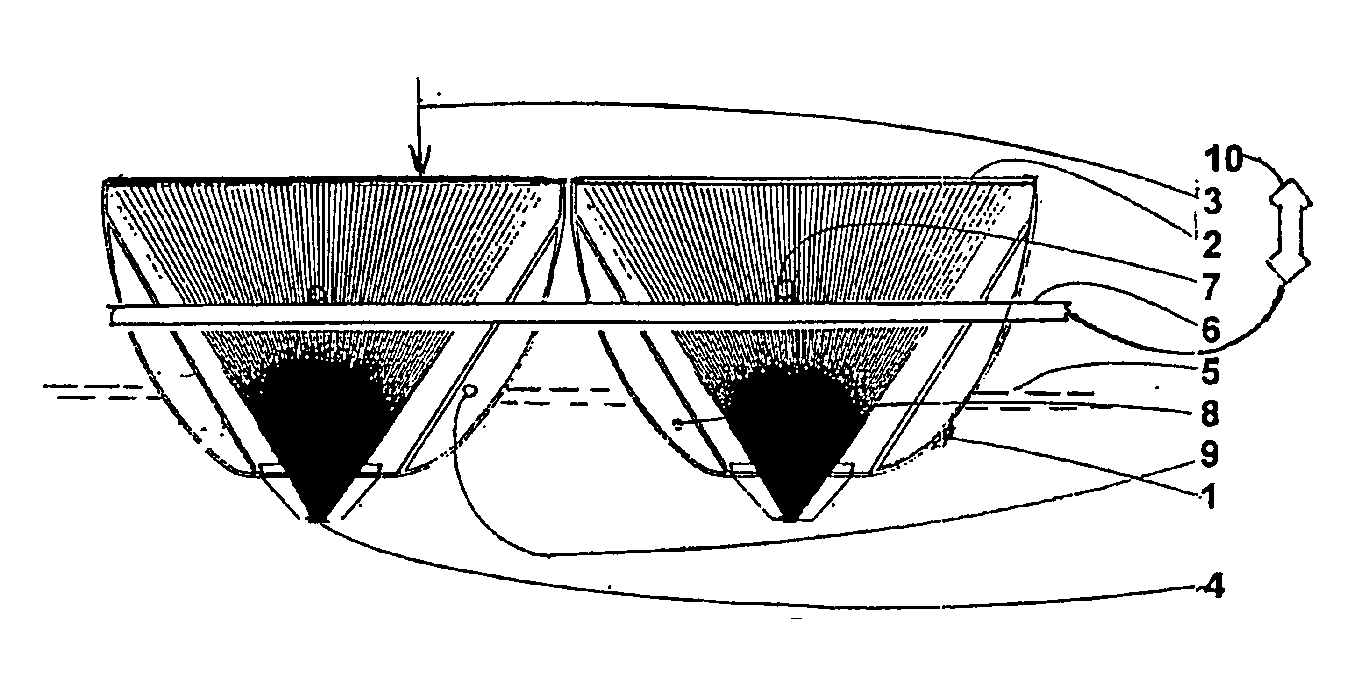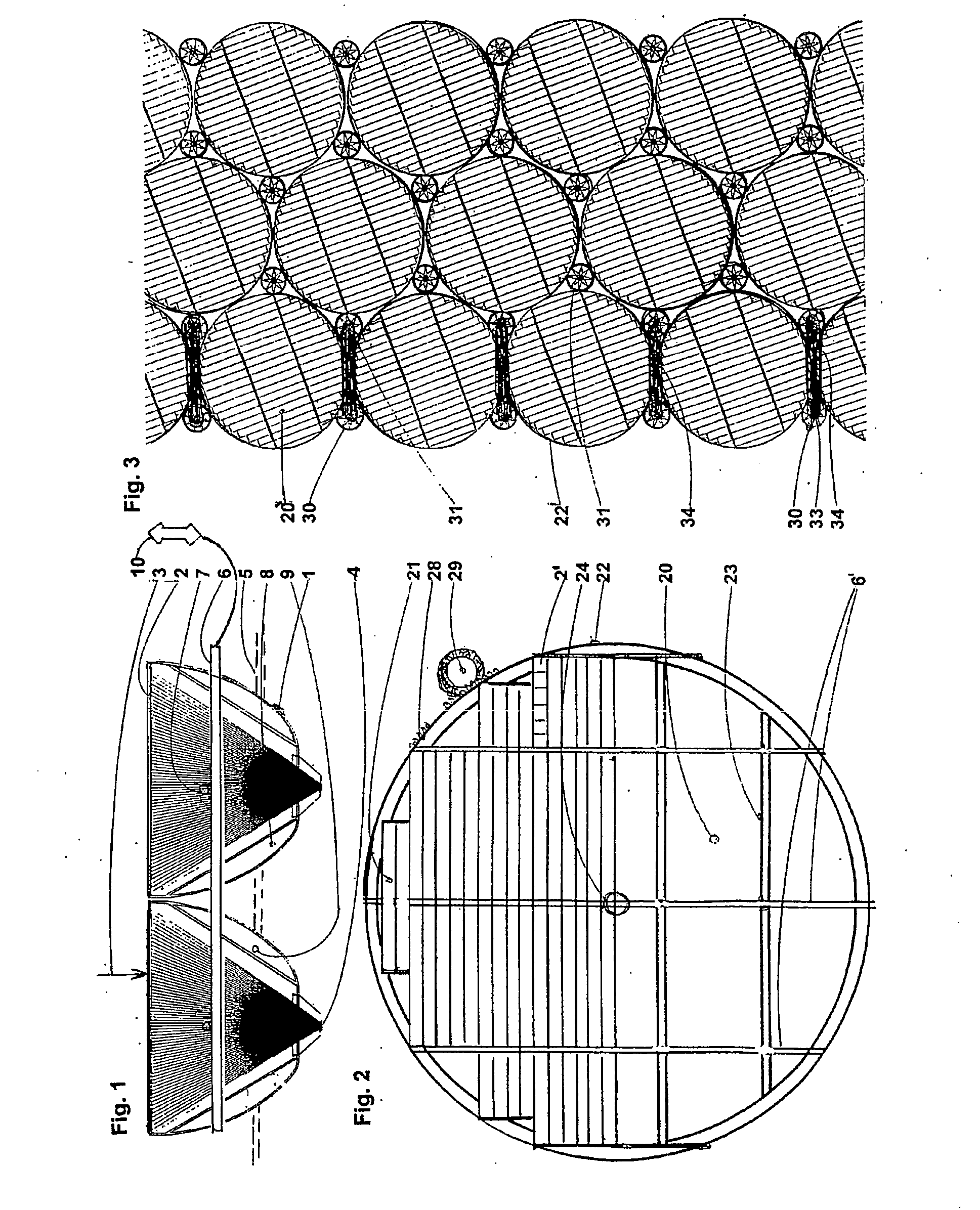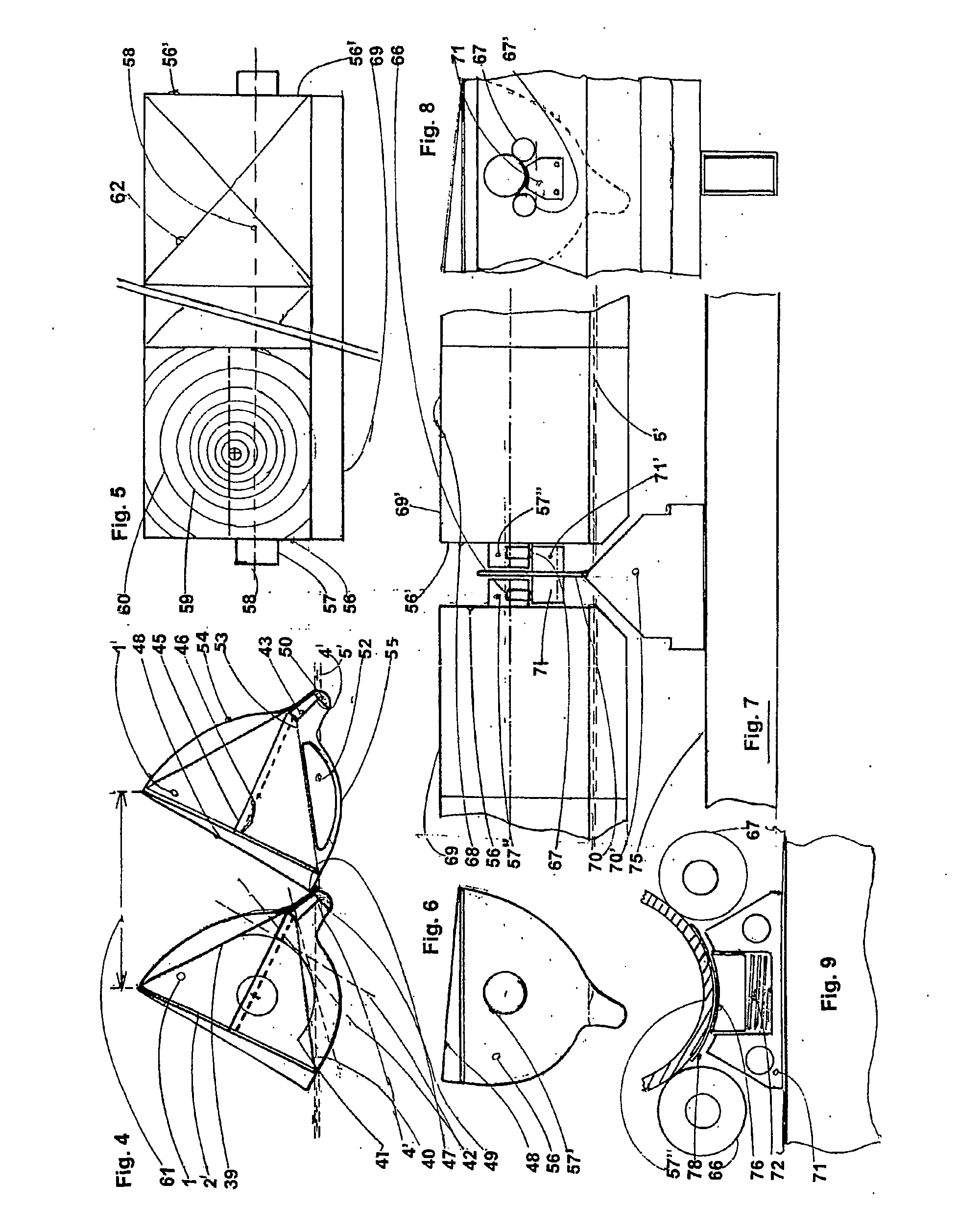Solar electricity generator
a solar power generator and solar energy technology, applied in the direction of machines/engines, heat collector mounting/support, light and heating equipment, etc., can solve the problems of high cost due to metal mass, large east-west separation of concentrator modules, and additional cost factors due to high maintenance labor involved, etc., to achieve optimal cell operation
- Summary
- Abstract
- Description
- Claims
- Application Information
AI Technical Summary
Benefits of technology
Problems solved by technology
Method used
Image
Examples
Embodiment Construction
[0038]FIG. 1 shows in schematic presentation a vertical section through concentrators positioned in troughs 1, covered by lenses 2 which concentrate parallel monochromatic rays 3 at focal spot 4. The troughs are supported on water body 5. The troughs are kept at a distance of only a few millimeters from each other by traverses 6. For tracking in solar elevation, the troughs can pivot around the horizontal geometric axis 7. The pivoting is controlled by sun-tracking sensors and is based on pneumatically driven balancing torques. By pumping water from ballast compartment 8 into ballast compartment 9, the two of which pneumatically inter-communicate via tube-shaped traverse 6, a buoyancy-torque makes each trough pivot upward to keep lens 2 aimed directly at the climbing sun, until it has reached its highest position at noon. Thereafter blower 10 creates positive pressure in ballast compartment 9 through traverse 6, so that water flows back from ballast compartment 9 into ballast compar...
PUM
 Login to View More
Login to View More Abstract
Description
Claims
Application Information
 Login to View More
Login to View More - R&D
- Intellectual Property
- Life Sciences
- Materials
- Tech Scout
- Unparalleled Data Quality
- Higher Quality Content
- 60% Fewer Hallucinations
Browse by: Latest US Patents, China's latest patents, Technical Efficacy Thesaurus, Application Domain, Technology Topic, Popular Technical Reports.
© 2025 PatSnap. All rights reserved.Legal|Privacy policy|Modern Slavery Act Transparency Statement|Sitemap|About US| Contact US: help@patsnap.com



